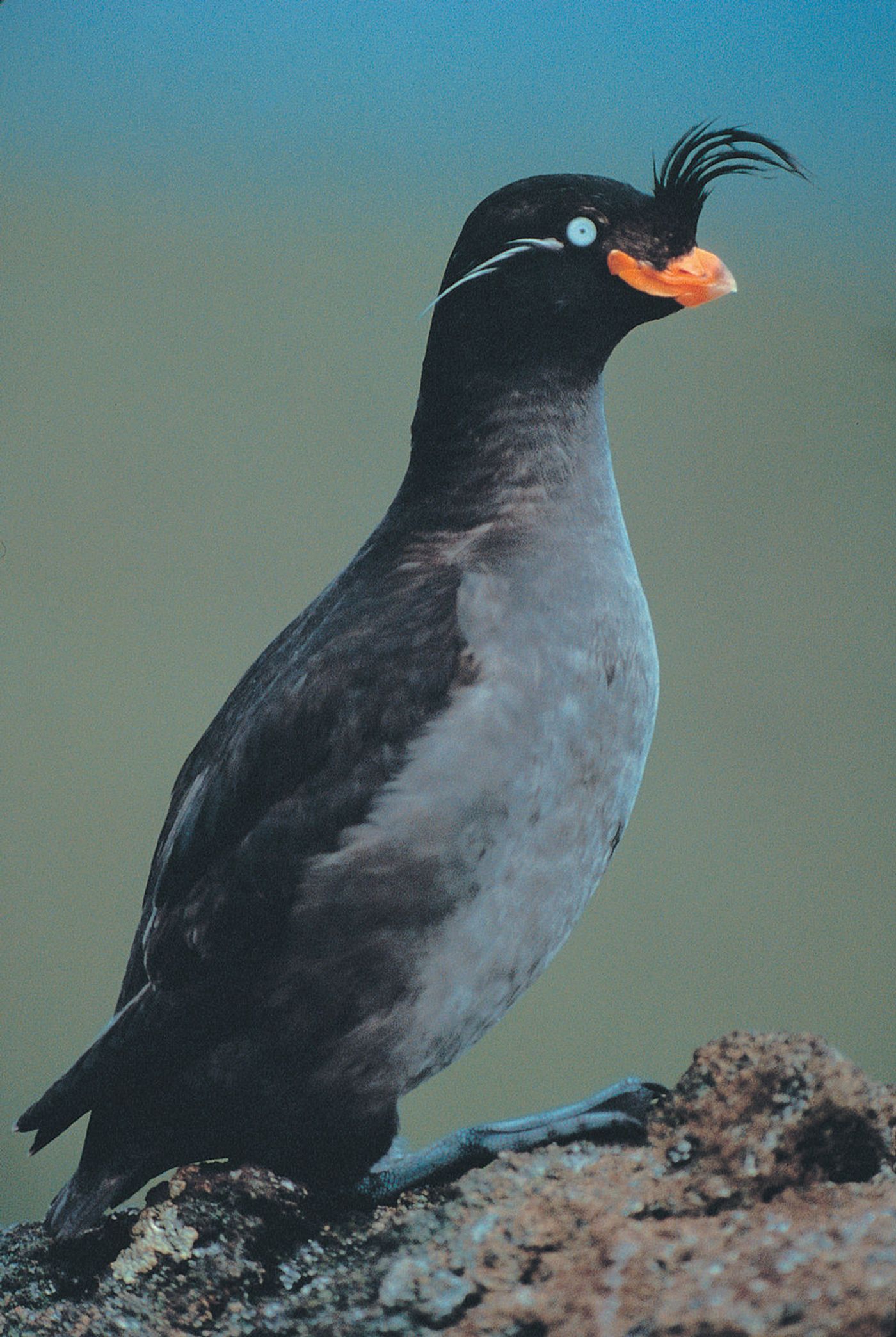For Intrasexual Selection in Birds, Mate Choice Can Go Either Way
While there’s scientific evidence highlighting how male birds in monogamous mating systems attract female mates by way of public display, there's been little research to confirm female birds using similar tactics to attract males.
A new study conducted by Caitlyn Stern from Santa Fe Institute digs deeper to find out more about the seductive behavior exhibited by the crested auklet (Aethia cristatella), and whether or not it can go both ways between sexes.
Image Credit: FWS/Wikipedia
The findings of the study are published in the journal Ecology and Evolution and highlight how females have unique methods of their own for attracting mates.
Related: Yes, birds do sleep while flying
Perhaps the most telling feature of the crested auklet is the ornamentation just above its head. Like a plethora of other ornamentation-flaunting birds, crested auklets utilize their plumage to promote their dominance and to seduce potential mates.
Those with the most robust ornamentation display and the highest success rate amongst male competition are likely to woo the female, but if the female is the one seeking a mate, does she have methods at her disposal to seduce the male?
According to Stern, yes; in fact, she might demonstrate her dominance by flaunting her savviness at competing for resources. Male birds typically see this as a desirable trait, so doing so can help her stand out from the crowd and increase her odds of mating.
While female crested auklets may not use the same exact tactics to attract males as males use to attract females, the research highlights how females possess their own methods for seducing males.
Furthermore, genetic modeling reveals how these female traits and the male preference for said traits have persisted for generations. Consequently, we can assume that monogamous systems can support these intrasexual selection qualities.
Related: Flocks of birds use 'beautiful physics' while flying to conserve energy
While the findings seem like a eureka moment for a concept that went understudied for eons, more research can help us determine if monogamous systems in other animal species work in similar ways or if this behavior is unique to the crested auklet.
It should be interesting to learn what information future studies will bring to the table.
Source: Santa Fe Institute, Wikipedia









